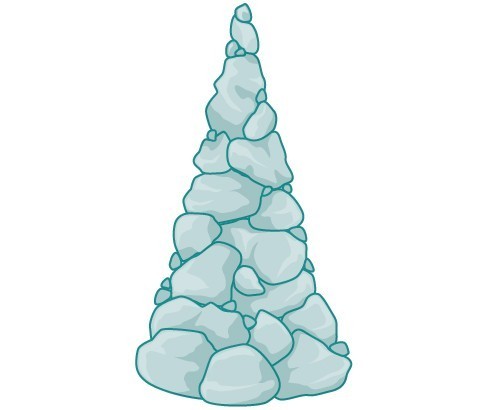What you’ll learn to do: Evaluate the inverse of polynomial and radical functions
A mound of gravel is in the shape of a cone with the height equal to twice the radius.

The volume is found using a formula from geometry.
[latex]\begin{align}V&=\frac{1}{3}\pi {r}^{2}h \\[1mm] &=\frac{1}{3}\pi {r}^{2}\left(2r\right) \\[1mm] &=\frac{2}{3}\pi {r}^{3} \end{align}[/latex]
We have written the volume [latex]V[/latex] in terms of the radius [latex]r[/latex]. However, in some cases, we may start out with the volume and want to find the radius. For example: A customer purchases 100 cubic feet of gravel to construct a cone shape mound with a height twice the radius. What are the radius and height of the new cone? To answer this question, we use the formula
[latex]r=\sqrt[3]{\dfrac{3V}{2\pi }}[/latex]
This function is the inverse of the formula for [latex]V[/latex] in terms of [latex]r[/latex].
In this section, we will explore the inverses of polynomial and rational functions and in particular the radical functions we encounter in the process.
Contribute!
Candela Citations
- Revision and Adaptation. Provided by: Lumen Learning. License: CC BY: Attribution
- Precalculus. Authored by: Jay Abramson, et al.. Provided by: OpenStax. Located at: http://cnx.org/contents/fd53eae1-fa23-47c7-bb1b-972349835c3c@5.175. License: CC BY: Attribution. License Terms: Download For Free at : http://cnx.org/contents/fd53eae1-fa23-47c7-bb1b-972349835c3c@5.175.
- College Algebra. Authored by: Abramson, Jay et al.. Provided by: OpenStax. Located at: http://cnx.org/contents/9b08c294-057f-4201-9f48-5d6ad992740d@5.2. License: CC BY: Attribution. License Terms: Download for free at http://cnx.org/contents/9b08c294-057f-4201-9f48-5d6ad992740d@5.2
